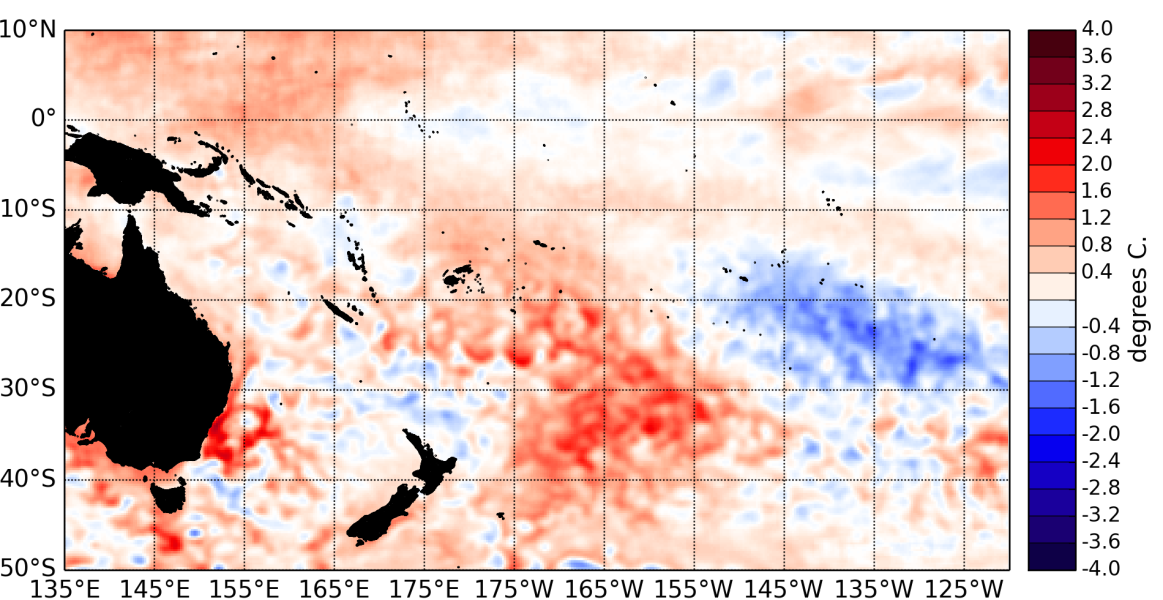The tropical Pacific remained in a neutral state (neither El Niño nor La Niña) in September 2013.
The weak La Niña – like pattern that was present in the sea surface temperatures (SSTs) over the past months has now vanished. Accordingly all NINO indices are now close to their climatological values. NINO 4 (in the western Pacific) presents the largest anomalies at 0.3°C for September, while NINO 3 is at – 0.1°C and NINO 3.4 is close to 0.
SSTs continue to be warmer than normal over a large area in the central Pacific, extending from Fiji to the northeast of New Zealand, while the ocean is cooler than normal further east, around French Polynesia.
The subsurface ocean is slightly warmer than normal from about 100 m to the surface, while colder than normal below (~ 200 m) in the west Pacific.
The trade winds remained close to normal in September. The Intertropical Convergence Zone (ITCZ) was situated slightly north of its climatological position in the eastern Pacific.
The dry conditions that affected the western equatorial Pacific in August have eased off in September. The South Pacific Convergence Zone (SPCZ) was intensified over its northern edge. The latest value for the TRMM ENSO index for the 30 days to 29 September is –0.46 (compared to -1.5 in August).
The SOI is currently slightly positive (+0.3 for September).
The Madden – Julian Oscillation (MJO) was active over the maritime continent over the past couple of weeks. Slightly enhanced convective activity associated with the MJO is forecast in the western Pacific over the coming two weeks.
The ensemble of dynamical and statistical climate forecast models that NIWA monitors indicates that neutral ENSO conditions are very likely to persist over the October – December 2013 period, with 89 % chance, versus 9 % for La Niña and 2 % chance El Niño (source IRI).

